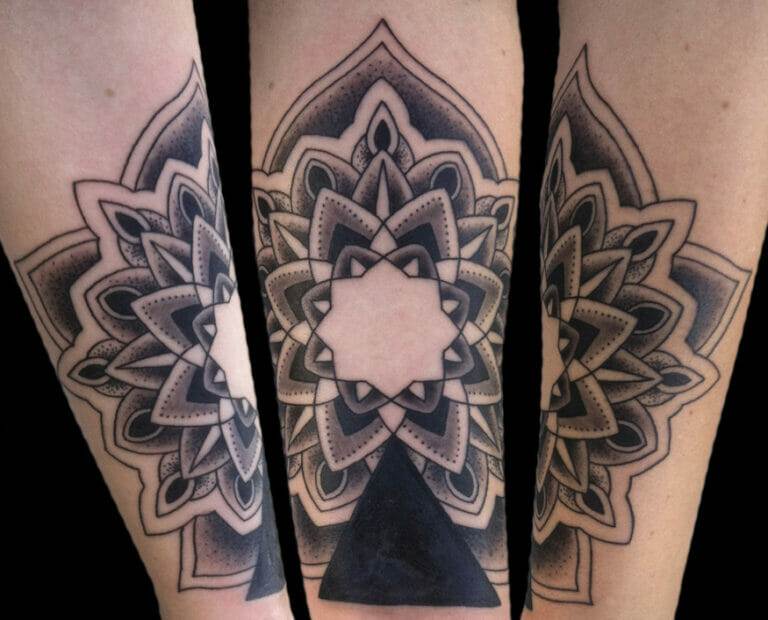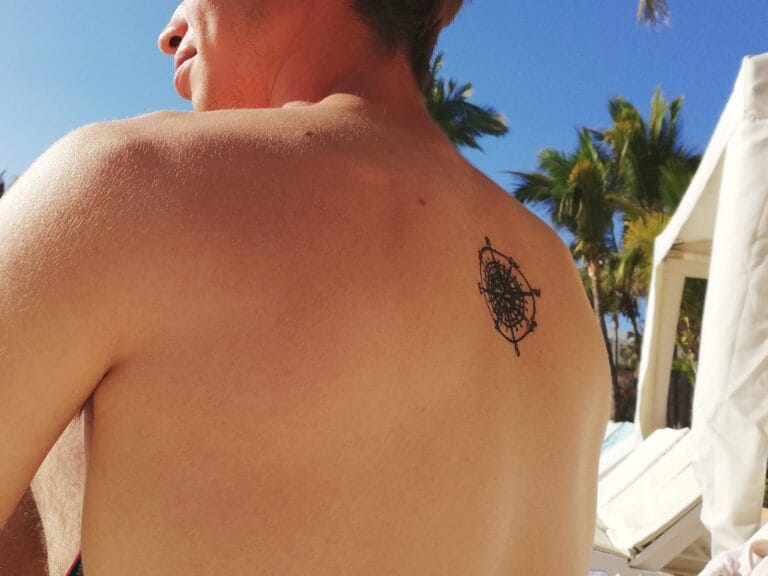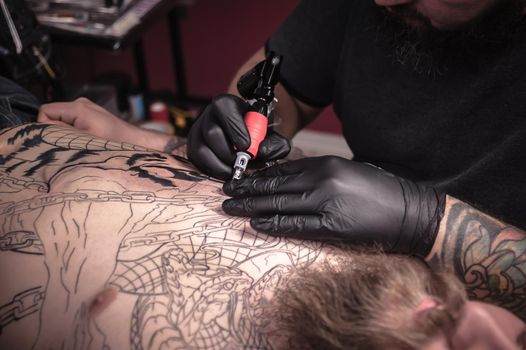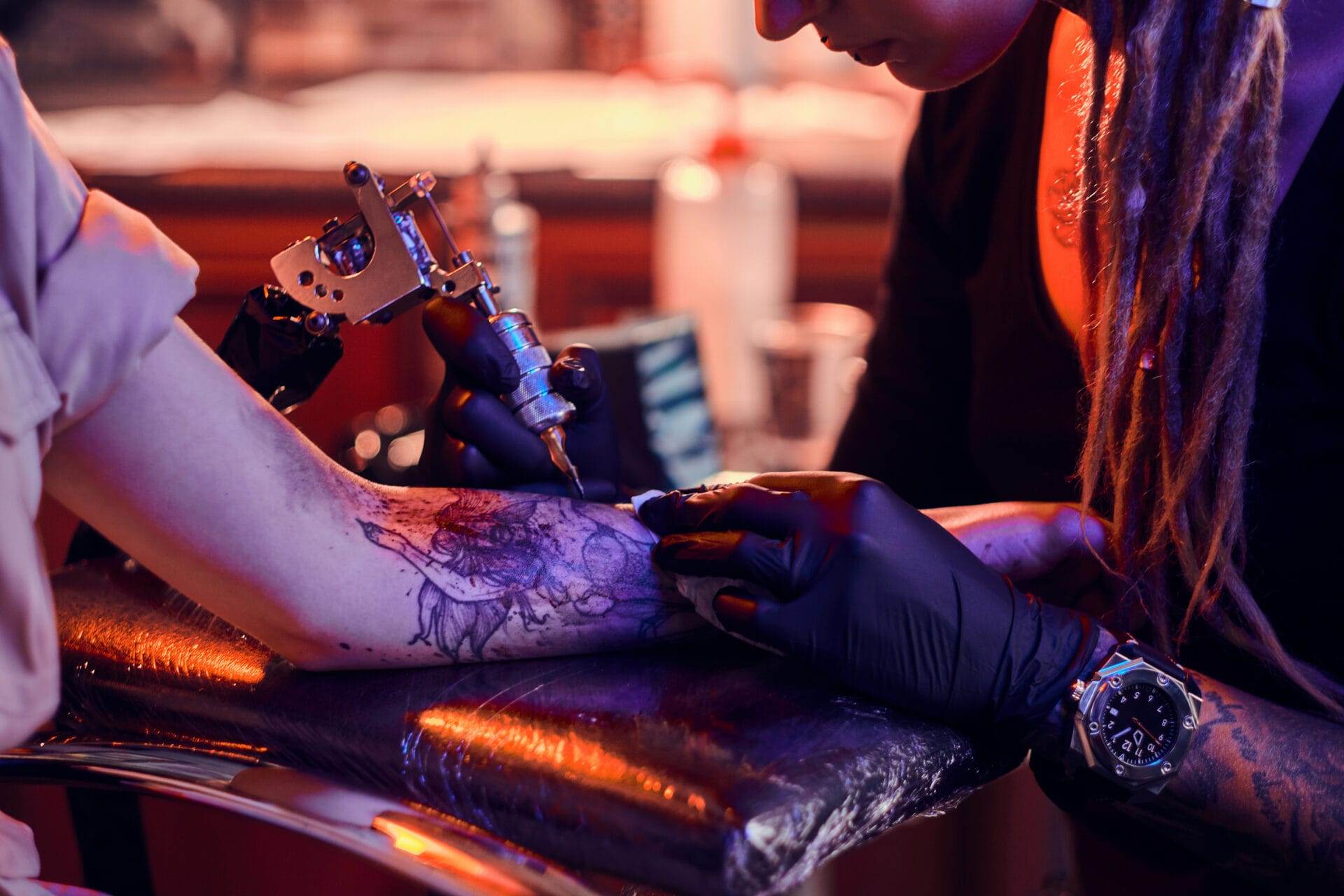
Tattoos have become a popular form of self-expression, art, and identity for many individuals around the world. However, one of the most frequently discussed aspects of getting a tattoo is the pain associated with the process. Understanding tattoo pain levels is crucial for anyone considering getting inked, as it can significantly influence the overall experience.
Pain perception varies from person to person, and what may be excruciating for one individual could be merely uncomfortable for another. This subject is not only about the physical sensation but also encompasses psychological factors that can affect how pain is experienced during the tattooing process. The anticipation of pain can often be more daunting than the actual experience itself.
Many people find themselves anxious about how much it will hurt, which can heighten their sensitivity to pain. Additionally, the location of the tattoo plays a significant role in determining pain levels. Some areas of the body are more sensitive than others, and understanding these differences can help individuals prepare mentally and physically for their tattoo journey.
In this article, we will explore the most and least painful areas for tattoos, factors that influence pain levels, tips for managing discomfort, and insights into the healing process.
Key Takeaways
- Tattoo pain levels vary depending on the body area and individual pain tolerance.
- The most painful body areas for tattoos include the ribs, feet, and hands.
- The least painful body areas for tattoos include the upper arm, thigh, and back.
- Factors affecting tattoo pain levels include skin sensitivity, bone proximity, and the presence of nerve endings.
- Tips for managing tattoo pain include staying hydrated, taking breaks, and using numbing creams.
Most Painful Body Areas for Tattoos
When it comes to tattoo pain, certain areas of the body are notorious for being more sensitive than others. Regions with less flesh and more nerve endings tend to amplify the sensation of pain during the tattooing process. For instance, areas such as the ribs, spine, and elbows are often cited as some of the most painful spots to get tattooed.
The skin in these regions is thinner, and the proximity to bone can make the experience particularly intense. Many individuals report that tattoos on their ribs feel like a sharp, burning sensation that can be difficult to endure. Another area known for its high pain levels is the inner arm and armpit.
The skin here is delicate, and the presence of numerous nerve endings can lead to heightened sensitivity. Tattoos in these locations can cause a stinging or prickling sensation that may be overwhelming for some. Additionally, areas like the knees and ankles are also considered painful due to their proximity to bone and the lack of cushioning fat.
Understanding these sensitive spots can help individuals make informed decisions about where they want their tattoos and prepare themselves for the potential discomfort involved.
Least Painful Body Areas for Tattoos
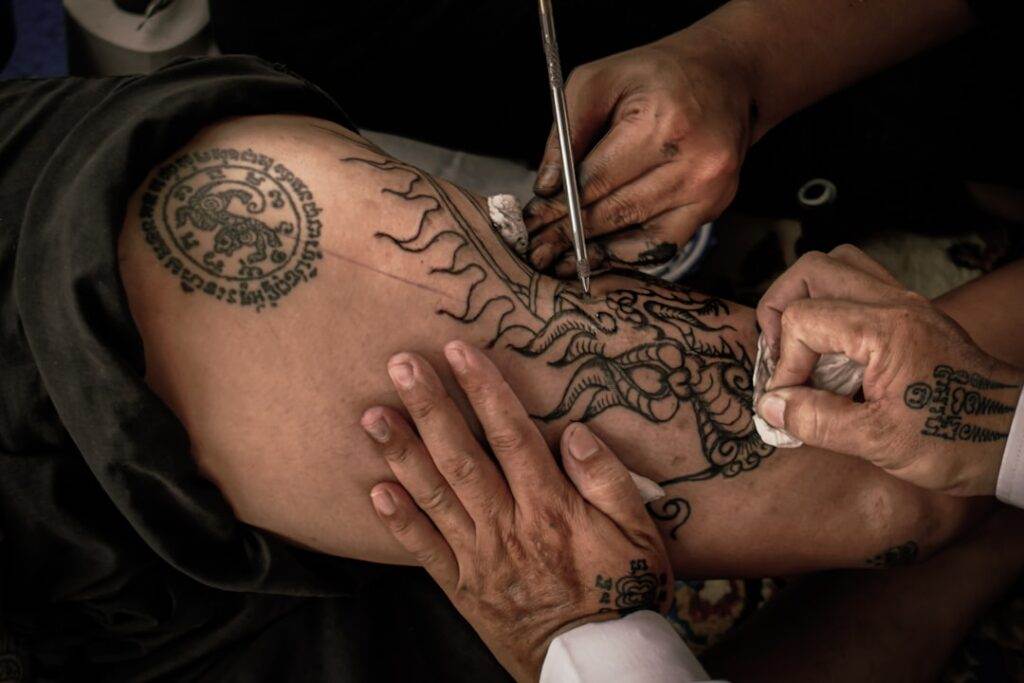
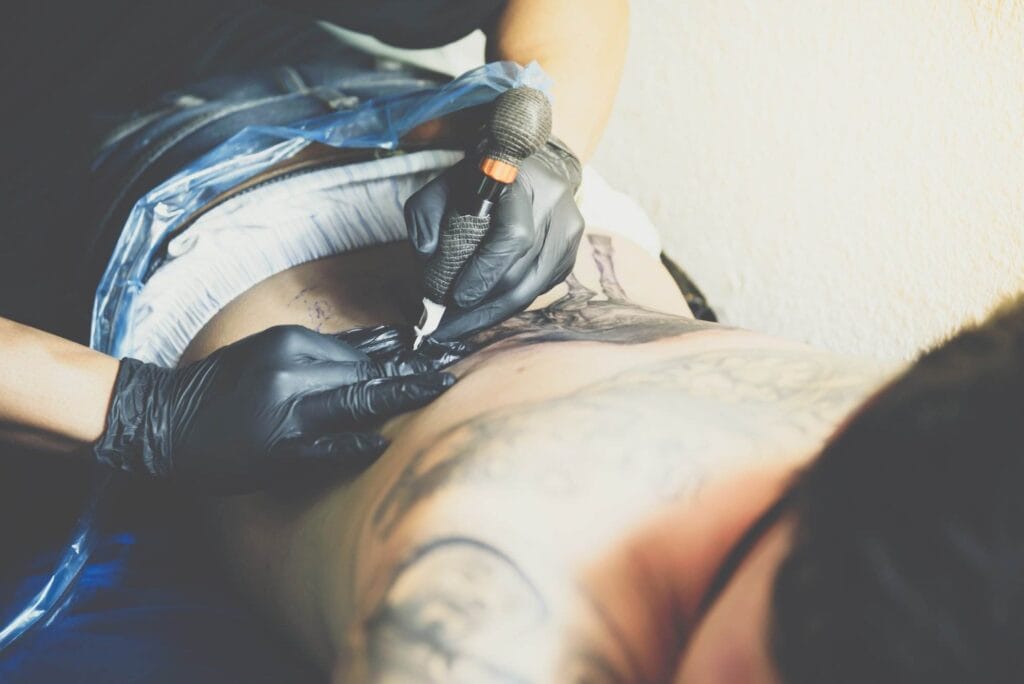
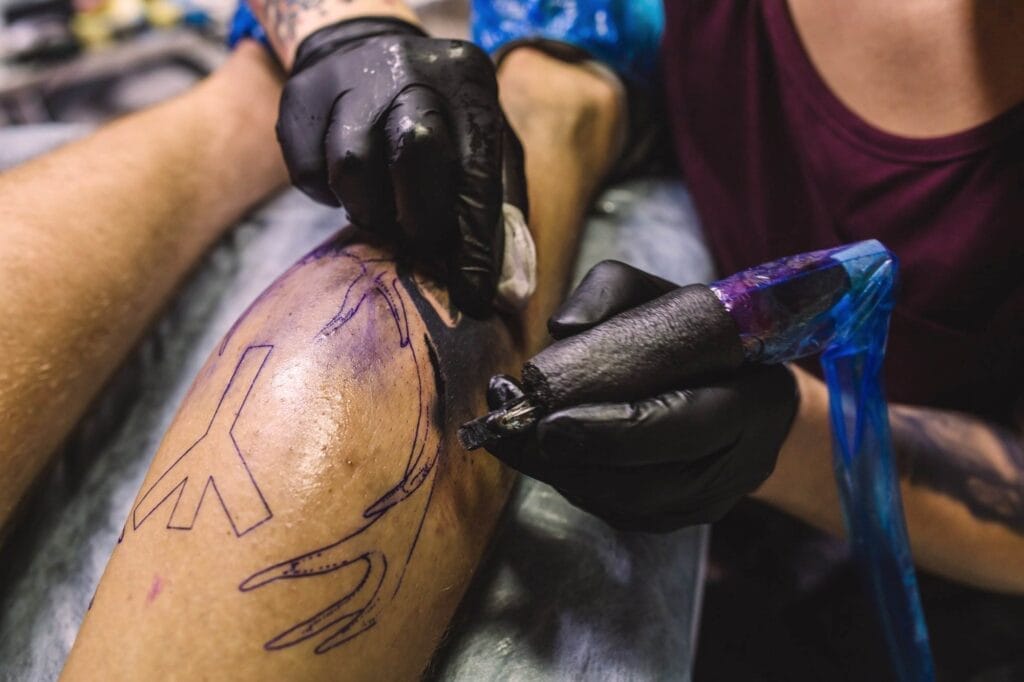
On the flip side, there are several body areas that are generally regarded as less painful for tattooing. These regions typically have more flesh and muscle, which can help absorb some of the discomfort associated with the needle’s penetration. The outer arm is often considered one of the least painful places to get a tattoo.
The skin here is thicker and has a good amount of muscle underneath, making it a more forgiving area for those who may be apprehensive about pain. Another relatively painless area is the thigh. Similar to the outer arm, the thigh has a substantial amount of muscle and fat, which can cushion the sensation of the needle.
Many people find that getting a tattoo on their thigh is a more manageable experience compared to more sensitive areas. Additionally, the forearm is also known for being less painful due to its thicker skin and muscle composition. Choosing these less sensitive areas can make the tattooing experience more enjoyable and less daunting for those who are concerned about pain.
Factors Affecting Tattoo Pain Levels
Several factors can influence an individual’s experience of pain during a tattoo session. One significant factor is personal pain tolerance, which varies widely among individuals. Some people have a higher threshold for pain and may find the tattooing process relatively easy to endure, while others may be more sensitive and experience discomfort more acutely.
This variability makes it essential for individuals to assess their own pain tolerance before committing to a tattoo. Another important factor is the size and complexity of the tattoo design. Larger tattoos or those with intricate details may require longer sessions, which can lead to increased discomfort over time.
The duration of exposure to the needle can amplify feelings of pain, especially in sensitive areas. Additionally, an artist’s technique can also play a role; experienced tattoo artists often have a gentler touch, which can minimize discomfort during the process. Understanding these factors can help individuals prepare mentally and physically for their tattoo experience.
Tips for Managing Tattoo Pain
Managing pain during a tattoo session is crucial for ensuring a positive experience. One effective strategy is to communicate openly with your tattoo artist about your concerns regarding pain. A skilled artist can adjust their technique or take breaks as needed to help you cope with discomfort.
Additionally, practicing relaxation techniques such as deep breathing or visualization can help calm nerves and reduce sensitivity to pain. Another helpful tip is to consider taking over-the-counter pain relief medication before your appointment. Non-steroidal anti-inflammatory drugs (NSAIDs) like ibuprofen can help alleviate discomfort during the session.
However, it’s essential to consult with a healthcare professional before taking any medication to ensure it’s safe for you. Staying hydrated and well-rested before your appointment can also contribute to a better overall experience, as fatigue and dehydration can heighten sensitivity to pain.
Understanding the Healing Process
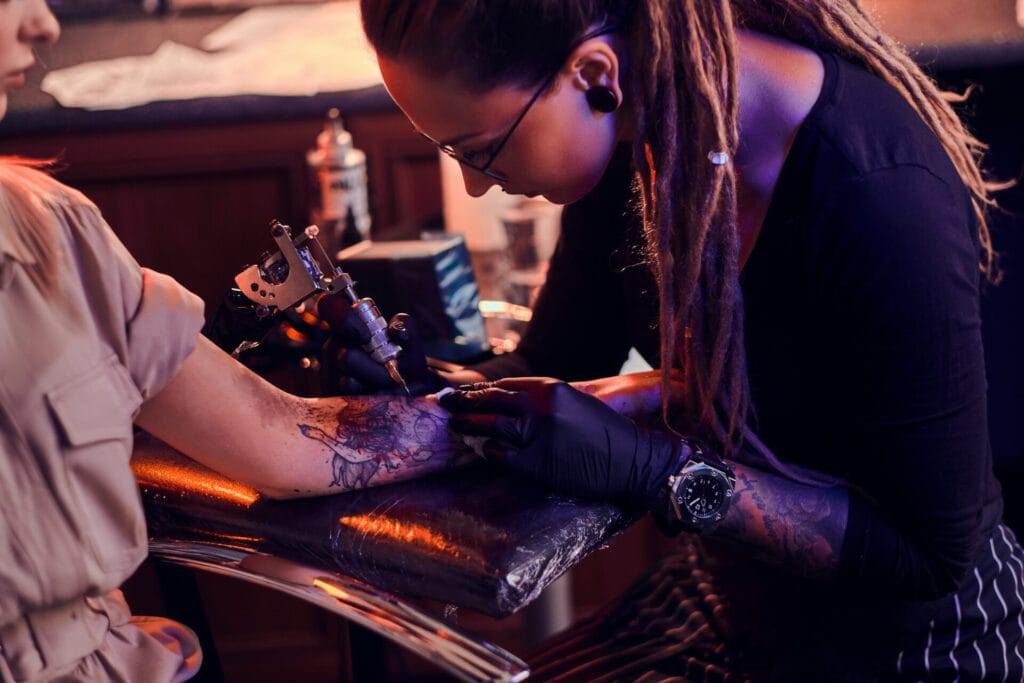
After enduring the tattooing process, understanding how to care for your new ink during the healing phase is vital. The healing process typically takes several weeks, during which your skin will go through various stages of recovery. Initially, you may experience redness, swelling, and tenderness around the tattooed area.
This is a normal part of healing as your body works to repair itself. Proper aftercare is essential for minimizing discomfort during this period. Keeping the tattoo clean and moisturized will help prevent infection and promote healing.
It’s crucial to follow your artist’s aftercare instructions closely, as they will provide guidance tailored to your specific tattoo and skin type. Avoiding direct sunlight and refraining from soaking in water (such as swimming pools or hot tubs) during the initial healing phase will also aid in recovery.
Choosing the Right Body Area for Your Tattoo
Selecting the right body area for your tattoo involves considering both aesthetic preferences and pain tolerance levels. If you’re particularly sensitive to pain or anxious about discomfort, opting for less painful areas like the outer arm or thigh may be wise. These regions not only provide a more manageable experience but also offer ample space for larger designs if desired.
Additionally, think about how visible you want your tattoo to be in everyday life. Some individuals prefer discreet placements that can be easily covered up when necessary, while others embrace bold designs on highly visible areas like hands or necks. Ultimately, choosing a location that aligns with your comfort level regarding both pain and visibility will enhance your overall satisfaction with your tattoo.
Conclusion and Final Thoughts
In conclusion, understanding tattoo pain levels is an essential aspect of preparing for your ink journey. By familiarizing yourself with both painful and less painful body areas, you can make informed decisions that align with your comfort level and personal preferences. Factors such as individual pain tolerance, tattoo size, and artist technique all play significant roles in shaping your experience.
Moreover, employing effective pain management strategies and understanding the healing process will contribute to a more positive overall experience with your new tattoo. Ultimately, choosing the right body area for your ink not only enhances your enjoyment of the process but also ensures that you cherish your chosen design for years to come. Embrace this unique form of self-expression with confidence, knowing that you are well-prepared for whatever challenges may arise along the way.
FAQs
What are the most painful body areas for getting a tattoo?
The most painful body areas for getting a tattoo are typically the ribs, spine, feet, hands, and inner bicep. These areas have less fat and muscle, and are closer to bone and nerve endings, making the tattooing process more painful.
What are the least painful body areas for getting a tattoo?
The least painful body areas for getting a tattoo are generally the outer upper arm, outer thigh, upper back, and buttocks. These areas have more muscle and fat, and are farther from bone and nerve endings, making the tattooing process less painful.
Why do some body areas hurt more than others when getting a tattoo?
Some body areas hurt more than others when getting a tattoo due to differences in the density of nerve endings, proximity to bone, and amount of muscle and fat. Areas with more nerve endings and less cushioning are typically more painful to tattoo.
How can I manage tattoo pain during the process?
To manage tattoo pain during the process, you can consider taking over-the-counter pain medication, using numbing creams or sprays, staying well-hydrated, and practicing deep breathing or meditation techniques. It’s important to discuss any pain management strategies with your tattoo artist beforehand.
Are there individual differences in tattoo pain tolerance?
Yes, there are individual differences in tattoo pain tolerance. Factors such as pain threshold, previous experience with pain, and individual pain sensitivity can all affect how a person perceives and tolerates tattoo pain.

